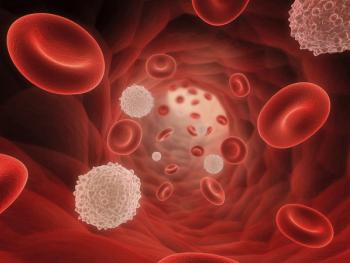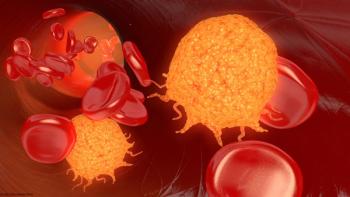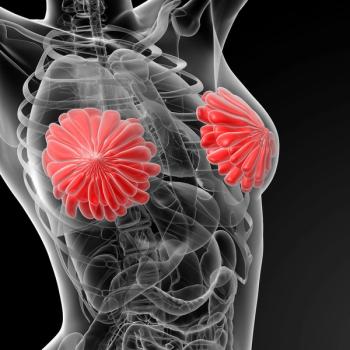
Adjuvant Nivolumab/Cisplatin/RT Improves DFS in Advanced Head and Neck Cancer
Results from the NIVOPOSTOP trial found improved DFS with adjuvant nivolumab plus cisplatin and RT for patients with LA-SCCHN.
Adjuvant nivolumab (Opdivo) plus cisplatin and radiotherapy appeared favorable and significantly improved disease-free survival (DFS) for patients with locally advanced squamous cell carcinoma of the head and neck (LA-SCCHN) who are at high risk of relapse, according to results from the phase 3 NIVOPOSTOP trial (NCT03576417) presented at the
At the data cutoff of April 30, 2024, 252 DFS events were recorded. The median follow-up was 30.3 months (IQR, 16-44.9). The 3-year DFS rate was 63.1% (95% CI, 57.0%-68.7%) in the nivolumab arm and 52.5% (95% CI, 46.2%-58.4%) for patients in the standard of care (SOC) arm, which was cisplatin plus radiotherapy (HR, 0.76; 95% CI, 0.60-0.98; P = .034).
Of note, the 12-month DFS rate was 71.7% vs 64.7%, and the 24-month rates were 64.9% vs 56.2% in the nivolumab and SOC arms, respectively.
The cumulative incidence of loco-regional relapse at 1 year was 11% vs 16%, at 2 years it was 12% vs 19%, and at 3 years it was 13% vs 20% between the nivolumab and SOC arms, respectively (HR, 0.63; 95% CI, 0.42-0.94).
“Post-operative nivolumab added to SOC cisplatin-[radiotherapy] improved patient outcomes for resected high-risk LA-SCCHN, that could be proposed as a new standard treatment,” Jean Bourhis, MD, PhD, professor and chief of radiation oncology at the Lausanne University Hospital in Lausanne, Switzerland; medical director of GORTEC; and principal investigator of the study, said during the presentation.
The trial enrolled 680 patients and randomly assigned them 1:1 to either the nivolumab group (n = 332) or the SOC group (n = 334). Patients were given 1 dose of nivolumab at 240 mg, followed by 360 mg of nivolumab every 3 weeks for 3 doses plus 100 mg/m2 of cisplatin every 3 weeks and immune-modulated radiotherapy at 66 Gy, followed by 480 mg of nivolumab every 4 weeks for 6 doses. The SOC arm was given 100 mg/m2 of cisplatin every 3 weeks and immune-modulated radiotherapy at 66 Gy.
Patients were included in the trial if they were younger than 75, had an ECOG performance status of 0 or 1, and had SCC of the oral cavity, oropharynx, or hypopharynx with: complete macroscopic surgical resection, pStage III or IV, or high-risk pathological features of relapse.
The median patient age was 59 in both arms, 75% and 77% of patients were male, 51% and 50% had an ECOG performance score of 0, 54% and 48% were current smokers, and 58% vs 58% had the main tumor site in the oral cavity between the nivolumab and SOC arms, respectively. Additionally, 45% vs 48% had a pStage of IVB, 57% vs 59% had extracapsular extension or positive margins, and 47% vs 42% had a PD-L1 combined positive score of 1 to 19.
Investigators also looked at whether nivolumab compromised the compliance with SOC cisplatin. Overall, 301 patients in the nivolumab arm and 304 in the SOC arm received cisplatin, with 82% of the nivolumab arm getting the cumulative dose of 200 mg/m2 or more compared with 87% in the SOC arm, and 62% vs 68% received cisplatin for 3 cycles. Receipt of radiotherapy was also analyzed with 303 patients in the nivolumab arm and 306 in the SOC arm, with 95% of patients receiving radiotherapy for 55 days or less compared with 97%, and 91% vs 95% were given a dose of 66 Gy.
Of note, 310 patients were given nivolumab before or during radiotherapy, with 75% receiving it for 4 cycles. Additionally, 260 patients were started on nivolumab maintenance with a median number of 6 maintenance cycles. The median number of total nivolumab cycles was 10.
Grade 1/2 treatment-emergent adverse effects (TRAEs) noted in either the nivolumab or SOC arms included stomatitis (58% vs 58%), radiation skin injury (59% vs 63%), dysphagia (32% vs 33%), nausea (40% vs 45%), and dry mouth (38% vs 42%). Grade 3/4 TRAEs included stomatitis (25% vs 24%), dysphagia (24% vs 18%), neutropenia (23% vs 23%), renal disorder (11% vs 5%), and radiation skin injury (7% vs 7%).
Reference
Bourhis J, Auperin A, Borel C, et al. NIVOPOSTOP (GORTEC 2018-01): A phase III randomized trial of adjuvant nivolumab added to radio-chemotherapy in patients with resected head and neck squamous cell carcinoma at high risk of. J Clin Oncol. 2025;43(suppl 17):LBA2. doi:10.1200/JCO.2025.43.17_suppl.LBA2
Newsletter
Stay up to date on recent advances in the multidisciplinary approach to cancer.

















































































